China Ethnographic Expedition II. Part VI. Yuanyang, QingdaoMapNovember 26, 2015 Yuanyang Rice TerracesMapIf you turn off all the lights and enlarge the photo to full screen, stars will appear. The Big Dipper is clearly visible. We wake up in the back of beyond in China, a seven-hours’ drive from the nearest major Chinese city. The Vietnamese border is just 50 kilometres away. 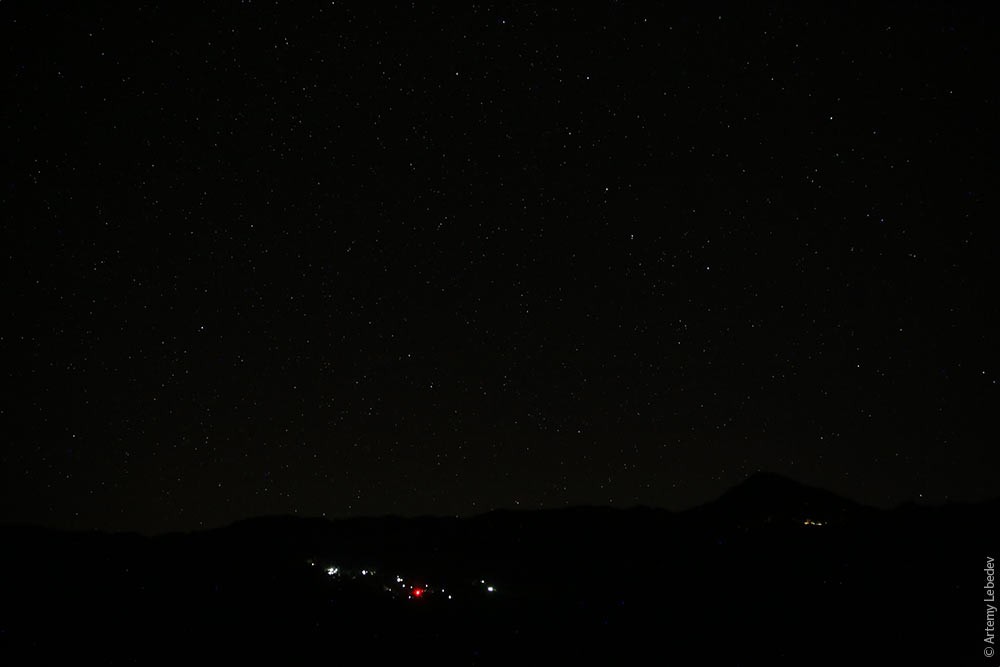 This area is interesting because the rice paddies sit on terraces, which they’ve been cultivating here for thousands and thousands of years.  The population is entirely rural. 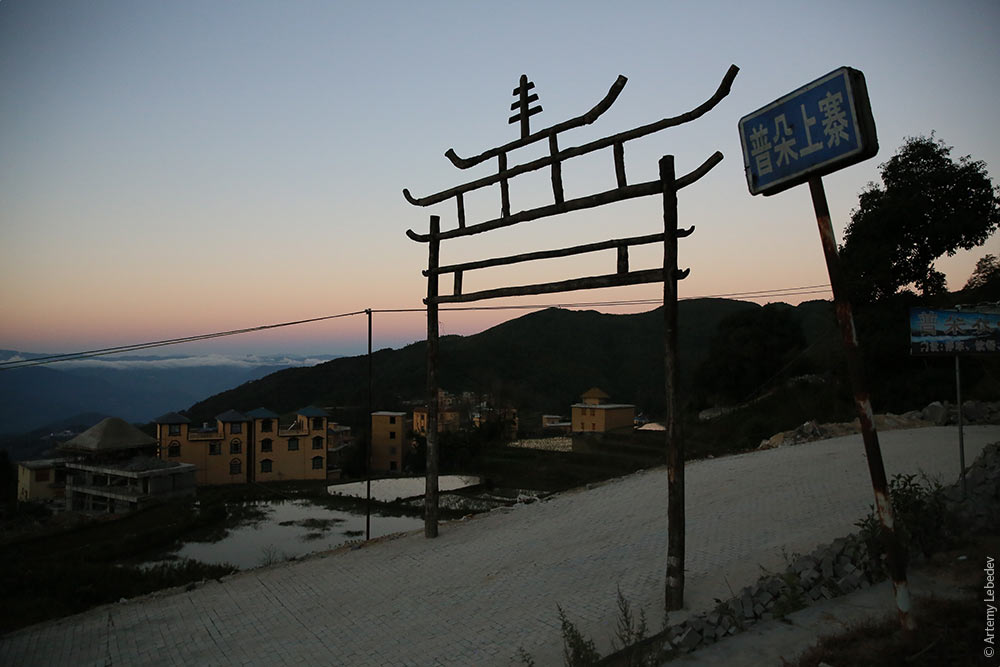 Mister, hey mister, buy a warm egg, won’t you? 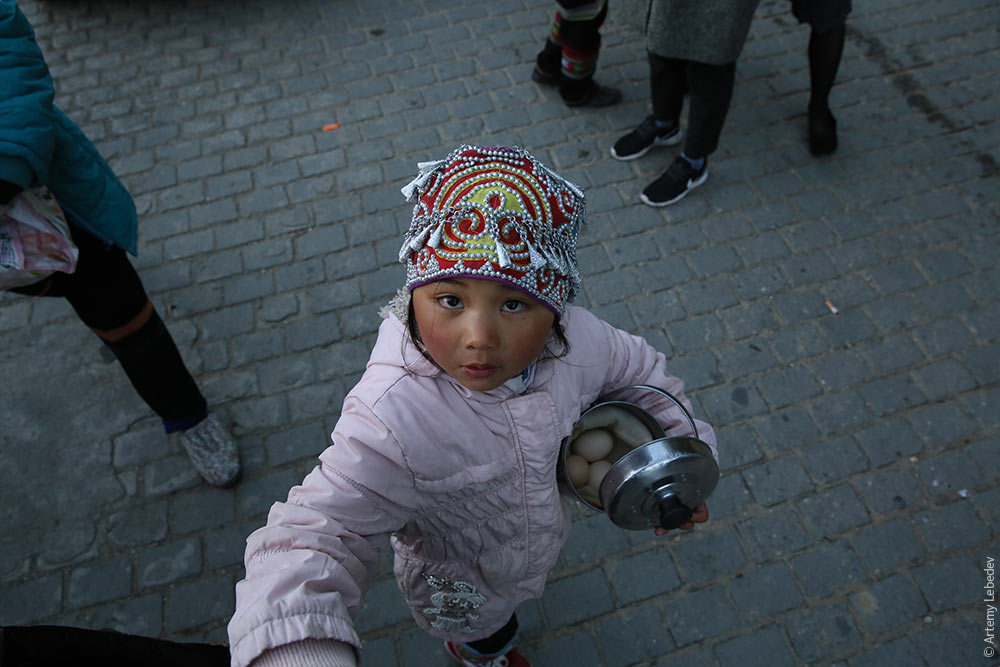 Photographs taken from the best angles are sold to tourists. Everyone is waiting for dawn to break. Nonetheless, no one seems to mind me enjoying the view unmediated by a camera lens. 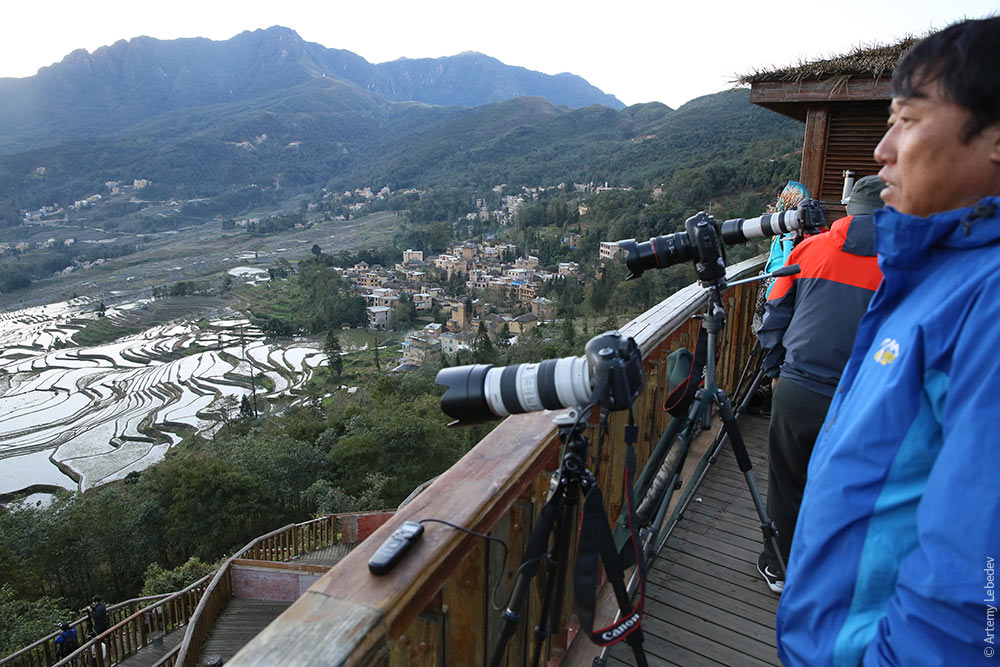 Peasants hurrying off to their work stations.  Silence and cold.  The sun peeks out from behind the mountain. It warms the air and the colour gamut. 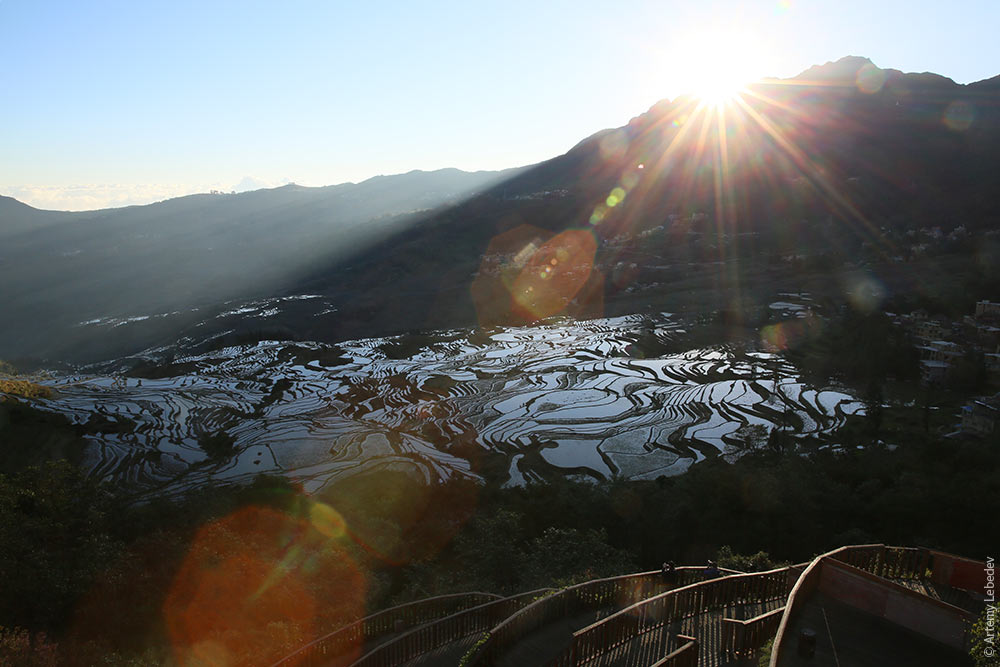 Peasants work away below, out-of-town gawkers look on. 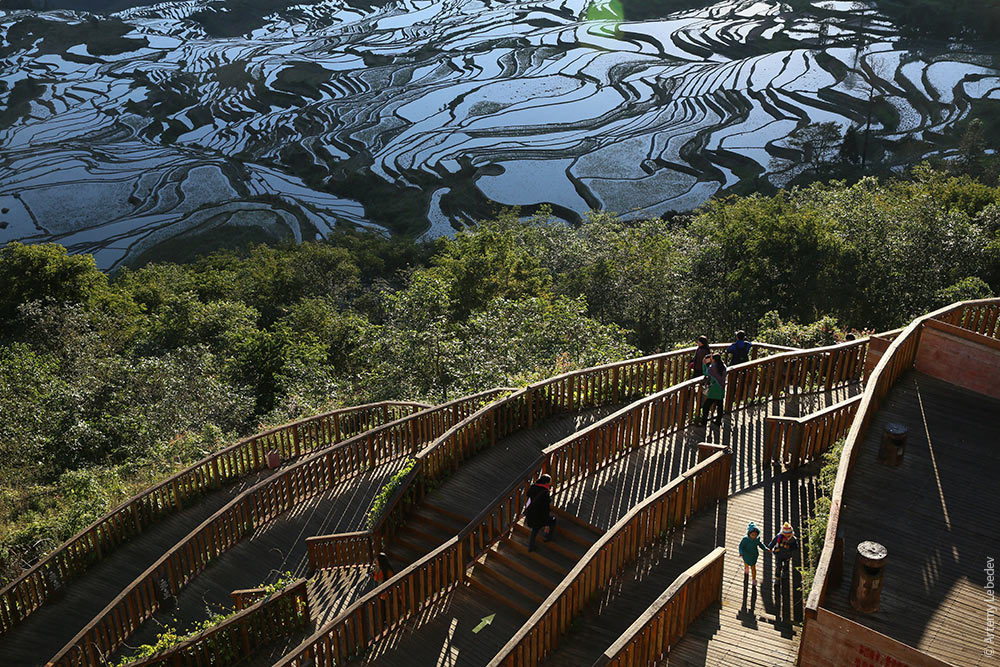 Beautiful.  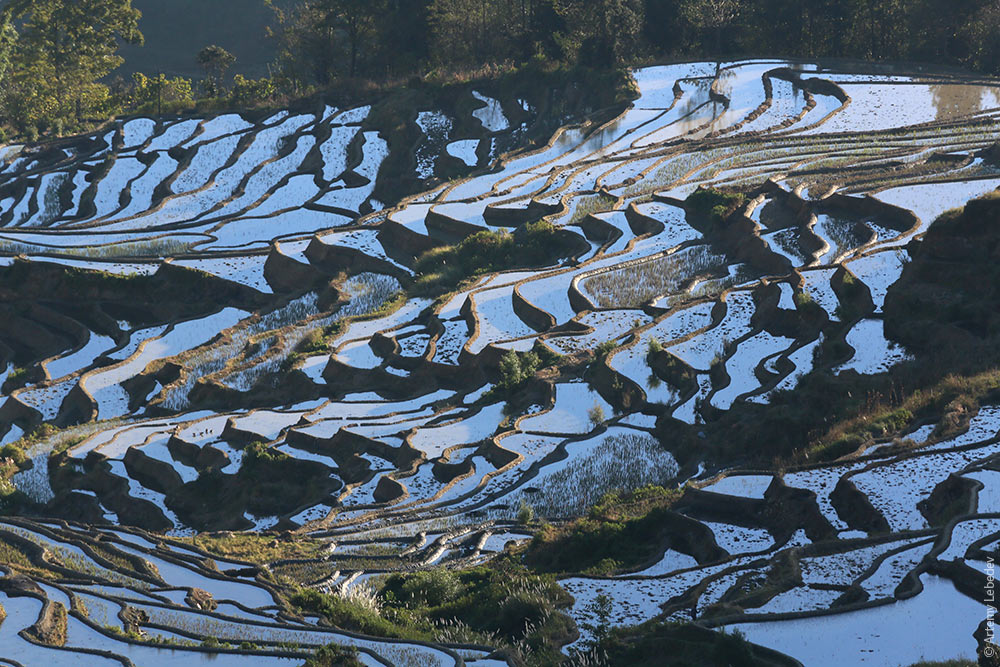 What’s most surprising is that this wasn’t set up for the tourists’ benefit, there’s just no other way of growing rice here.  Note the size of the little houses.  When the time comes to work the land, the peasants stay in these little houses because the village is a long trot away. 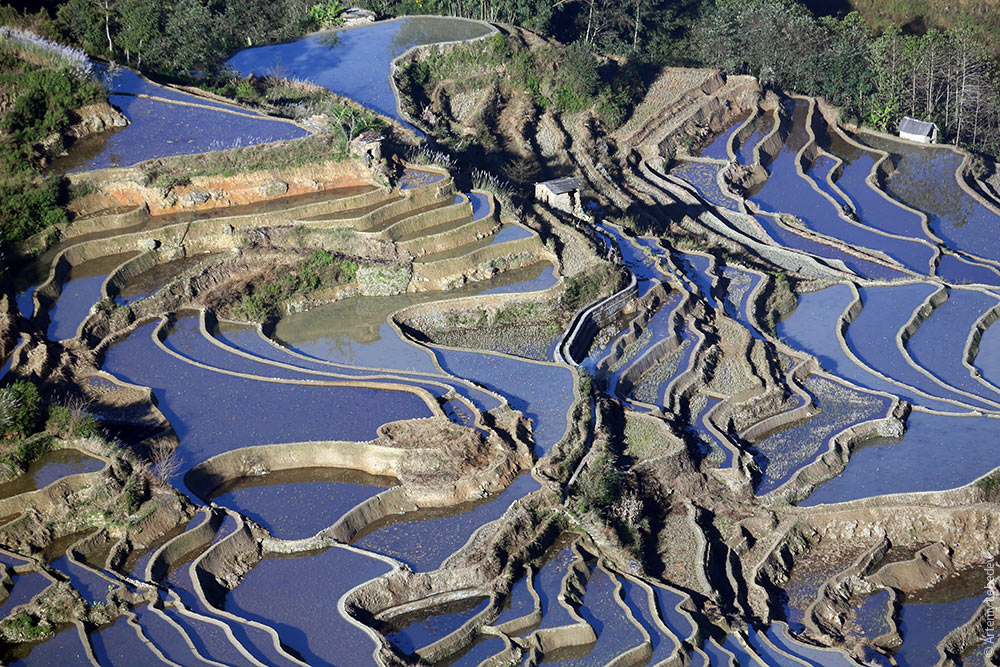 Speaking of which, here it is. 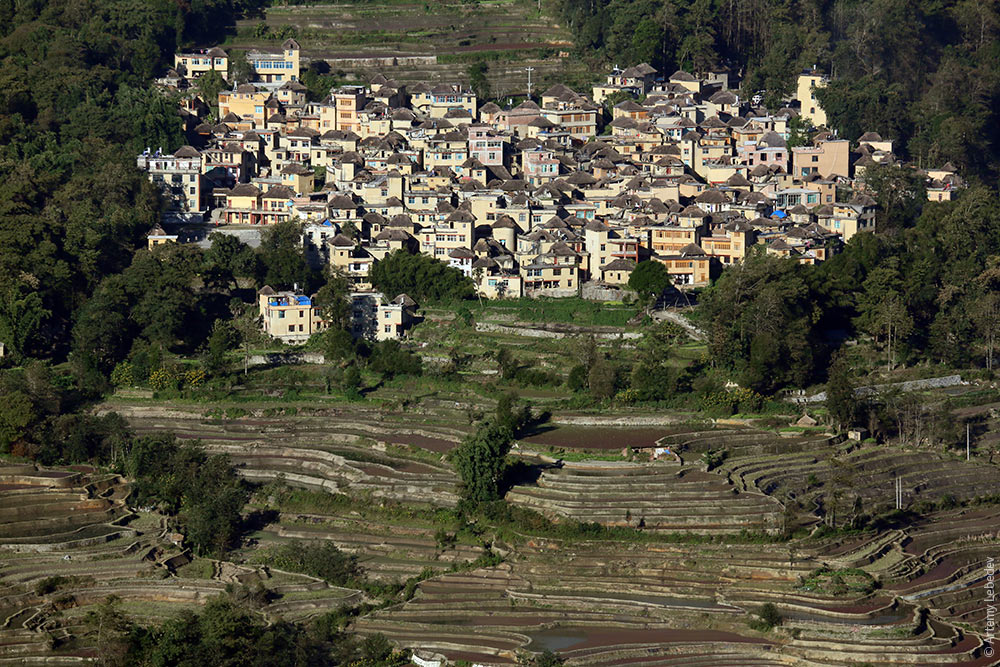 A more multistorey village. 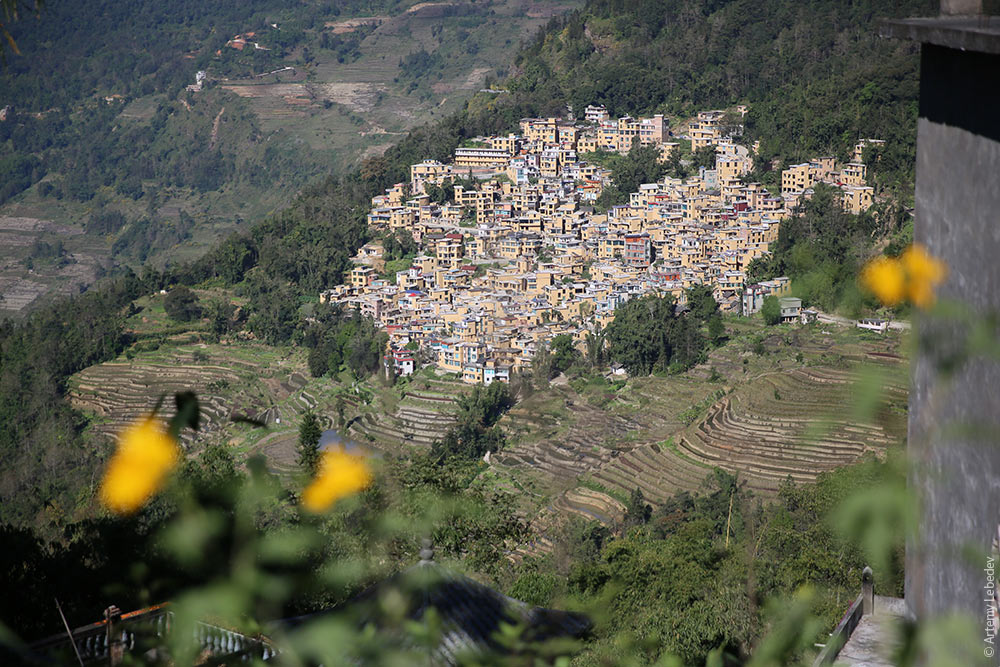 Rice.  A river flows above; the water cascades down to fill the terraces. 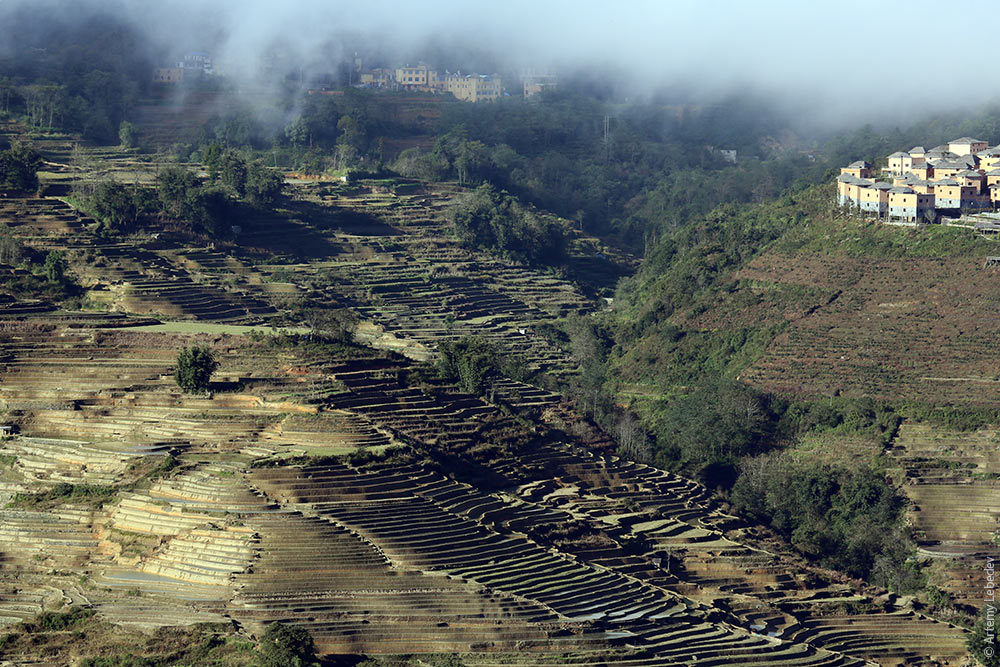 What local women typically look like. The basket is a must-have. So are the wellies. 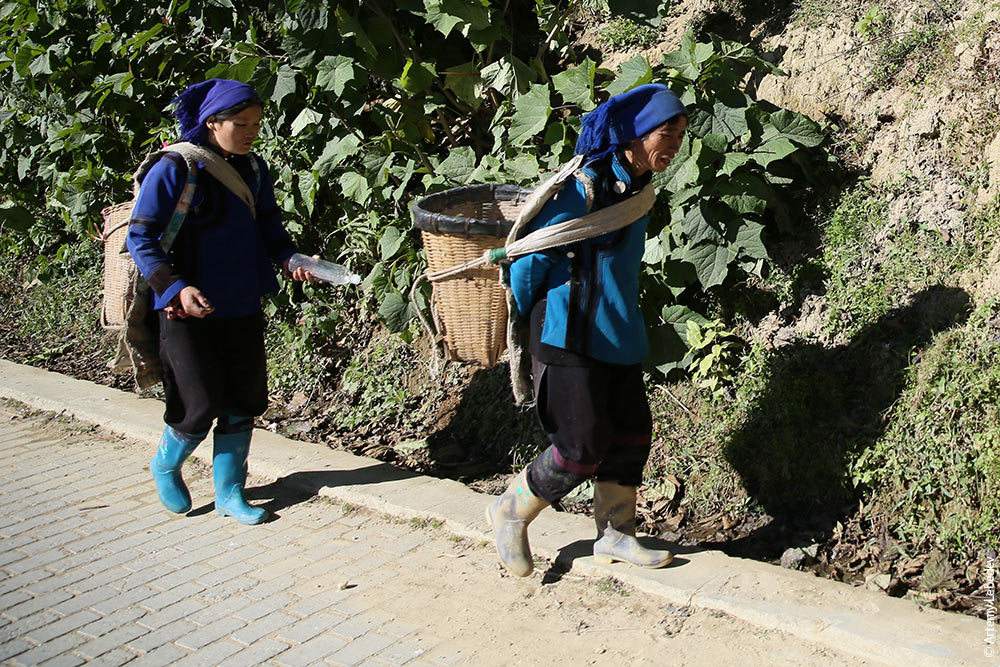 Off to the market.  I wanted to take a closer look at the terraces. However, I didn’t account for the fact that the ledge had been freshly built out of clay. I slipped and ended up knee-deep in sludge. Thankfully, it wasn’t particularly deep. 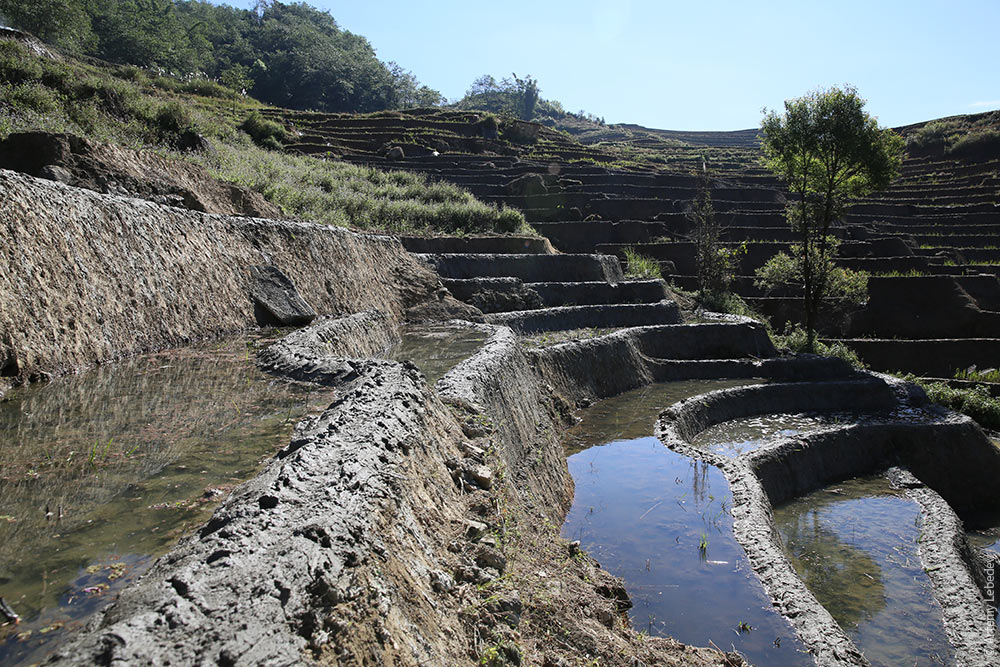 A buffalo pulling a plough. The peasant is earning his family’s daily bread. I am standing next to him in freezing cold water, clad in shoes and socks, covered in clay, wearing a smile of bliss. This is the very reason to go travelling. 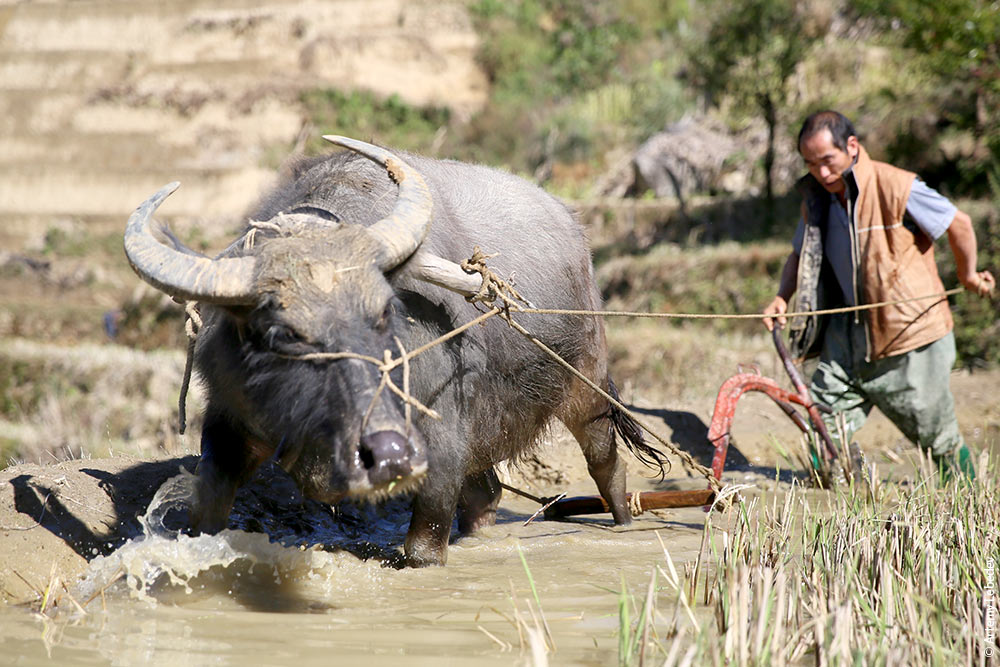 QingdaoMap
On the first China expedition we sought out crappy hotels, although we didn’t manage to find any truly terrible ones. This time around we looked for nicer ones, and we got lucky.  Our hostel is in the old port. The style of the buildings here is not the least bit Chinese; it’s German. The reason being that Qingdao was populated and built up by Germans.  Newbuilds stand shoulder to shoulder with old buildings.  Female Chinese street sweepers. Three graces.  The city is German, hence the heightened appreciation for German cars.  Un-Chinese proportions.  The Germans put their backs into it, after all, it was for their own use.  The German governor’s house. 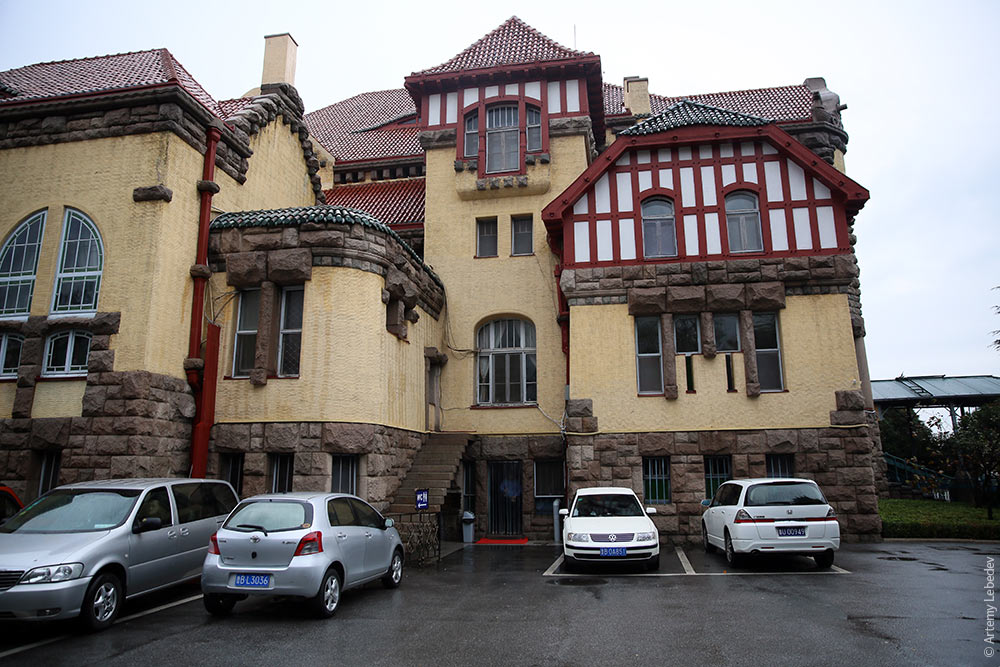 Streets in the colonial neighbourhood. 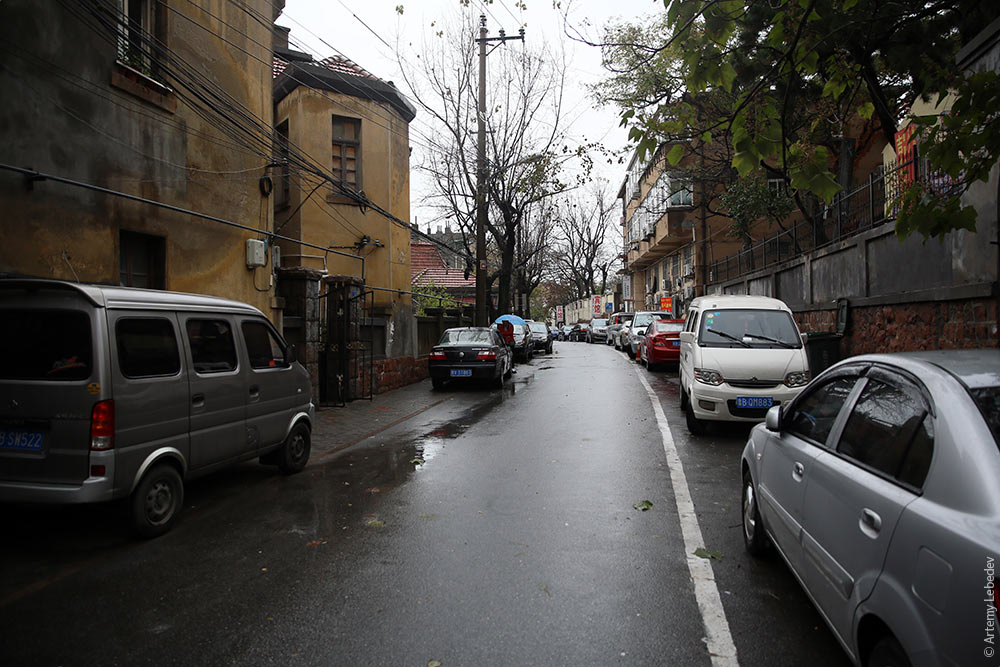 Fire hydrants are signposted with a structure atop a pole, suggesting that you get blizzards and snowdrifts here. 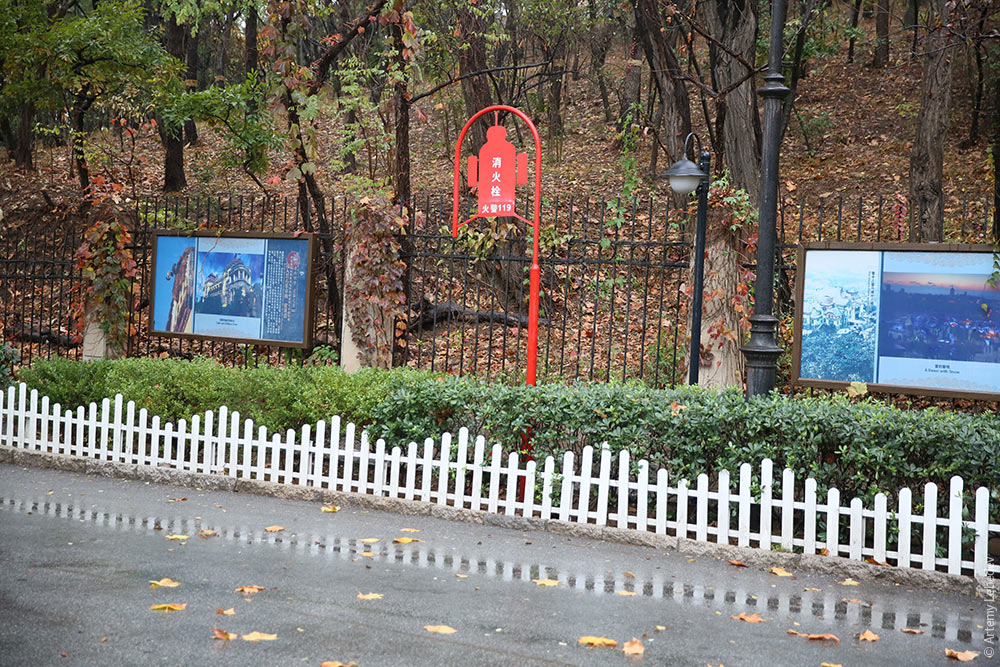 Fire hydrants are closely protected.  An excellent idea — hanging a variable message sign on a telescopic mast. It’s a very handy way of providing mobile wayfinding for various events. You install this thing, get your message out to everything within a one km radius, then take it with you when you leave. 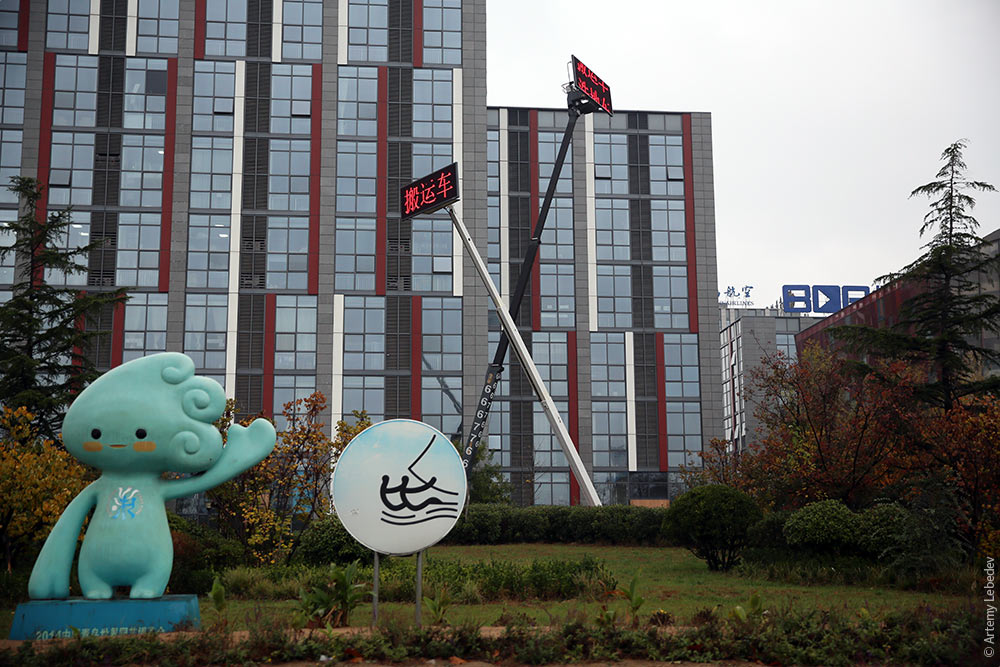 Asya getting a thorough shakedown at the airport. 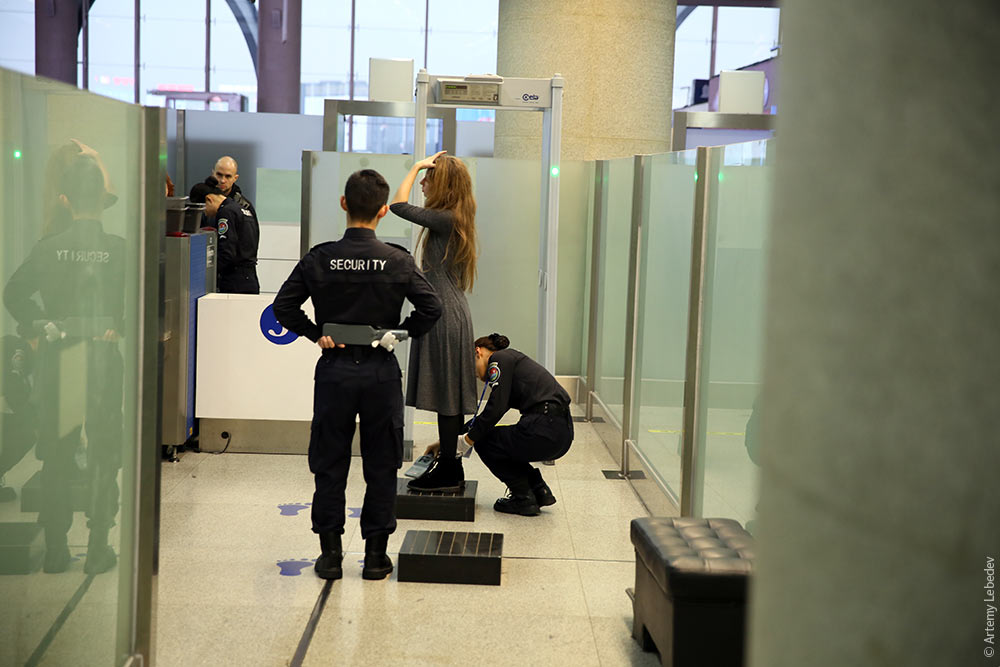 This is the first time I’ve seen advertising tablets built into trolleys. You roll your suitcase in front of you, throwing glances at ads and checking your gate number at the same time. 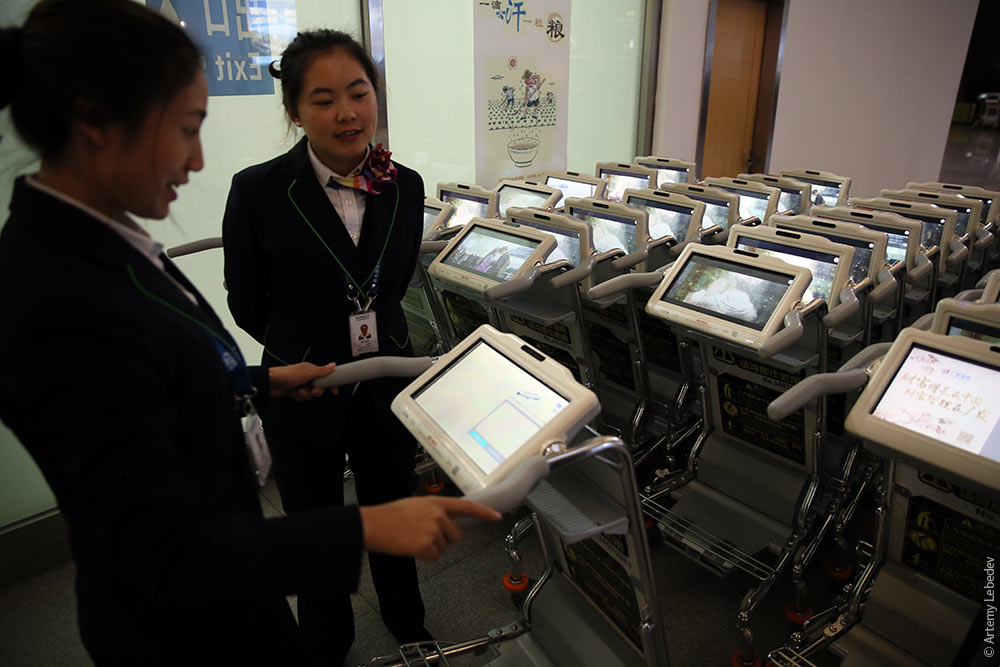 There’s one important distinguishing feature of modern-day China. It’s awfully expensive here! One yuan is equivalent to exactly 10 roubles, so if you add a zero to any price you get a sense of the order of magnitude, it’s very convenient. Here’s an airport café menu. An espresso (awful, like death warmed up) costs 380 roubles (5.5 dollars); if you add more water, it’ll be 480 roubles (>6 bucks). A stomach- churning latte will set you back 780 roubles. Even the Hyatt rooftop bar in Moscow is less of a rip-off. 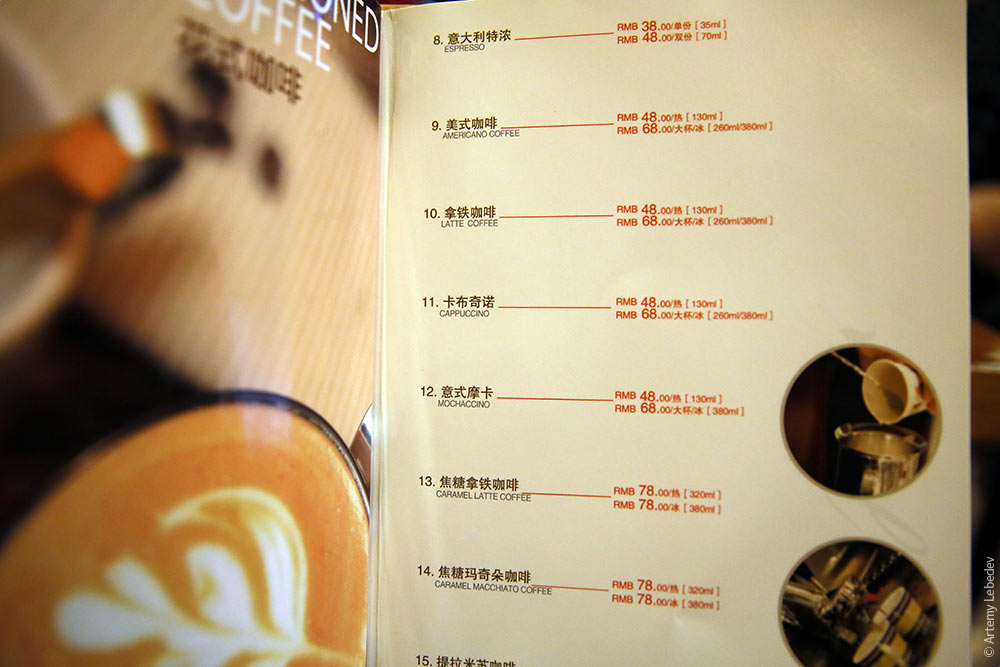 Of course, we did see some food joints where the six of us could put a lot away for 1200 roubles. But this was mainly vegetables. In a “European-style” café, a portion of meat costs 1200. We spent a total of 173 430 roubles over the course of the expedition, that’s 28 833 roubles per member, roughly equivalent to 1800 roubles per person per day. What really made my blood boil, so much so that I still can’t get over it, is that an ordinary supermarket bath towel costs 2500 roubles! Almost 40 bucks for some rag, produced right here in China. Why is it that the same towel will cost about a third of the price in a regular store in Russia? I was too skint to buy one, renting a towel at various hostels for five yuan a pop (that’s fifty roubles). |